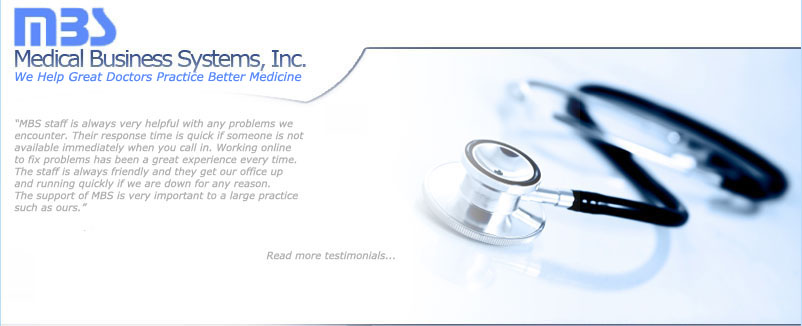At about the same time the Senate Finance Committee voted 14-9 Tuesday to approve its healthcare reform bill. Medical Group Management Association President and CEO William F. Jessee, MD, took the stage in Denver to urge his audience to do their part to fix the nation’s troubled healthcare system. Information technology is a vital piece of the solution, he said. Jessee also talked about the physician’s focus on patient safety, quality measures and the MGMA’s leadership in administrative simplification and Project Swipe IT, which calls for the adoption of standardized, machine-readable patient ID cards by Jan. 1, 2010. Jessee put forth a laundry list of challenges including: Insuring the uninsured; Controlling costs; Assuring patient safety; Solving manpower shortages; and sharing health information. Read more…
The Senate Finance Committee approved a $829 billion health care reform bill that includes provisions designed to leverage health IT tools. The finance panel was the last of five congressional committees to approve its version of a health care reform bill. The bill also would offer bonus payments to Medicare Advantage providers who achieve certain performance levels for evidence-based care management plans and other quality measures. Read more…
Standards development is at the heart of healthcare reform, according to David Blumenthal, MD, National Coordinator for Health Information Technology. Blumenthal said the National Health Information Network, designed to allow providers to share information for the efficient care of patients, is in the spotlight as Congress moves forward with health reform legislation. President Barack Obama has pledged $50 billion toward healthcare IT advancement over the next five years, with $20 billion already committed under the American Recovery and Reinvestment Act of 2009(ARRA), passed in February. As “meaningful use” is defined and with the inclusion of information exchange, he said, the HIT Standards Committee will need to accelerate the availability of standards and specifications to bring them into faster and more effective use. Read more…
CCHIT launched a new modular certification program called Preliminary ARRA 2011 on October 6, 2009. The program will focus solely on ‘meaningful use’ objectives and accompanying standards needed to qualify for federal stimulus funding.The Certification Facts label will only indicate which of the meaningful use objectives are supported by the technology and will allow eligible providers to understand whcih product-or products in combination-can support all of the necessary objectives to qualify for incentive funding contained in the A.R.R.A. of 2009. Read more…
Automated calls to members and patients are becoming more prevalent in the healthcare industry, according to a healthcare IT executive. Case studies documenting the success of automated communication have also built momentum and are helping the market grow. Offloading predictable tasks enables nurses to focus on a specific patient’s needs. It is a morale booster for office staff because it “finds efficiencies and frees resources.” Read more…
HHS Secretary Kathleen Sebelius today released a report on how health information technology can improve health care for Americans living in rural communities. The report examines how the Columbia Basin Health Association in Othello, Wash., uses health information technology to improve health care quality and patient safety as well as promote care coordination and continuity. The complete report is available now.
“The life expectancy in some urban pockets in New York and in rural Mississippi may be even lower than in some of sub-Sahara Africa,” said Dr. Garth Graham, deputy assistant secretary for HHS’s Office of Minority Health. “Life expectancy may be 15 years less than the general U.S. population.” Health disparities are a complicated problem that will not be solved with just more access to healthcare or improving socio-economic status. “It’s not just geography,” he said. “Some of same problems with access to care in Tupelo, Miss, are the same as for those in poverty-stricken areas in Manhattan.” Read more…
The HIT Standards Committee received the latest deliverables from its workgroups. 17 of 29 measures listed concern quality remodeled after quality measure authors to be based on data elements captured in electronic health records. Of these two are privacy & security related (to comply with HIPAA Privacy and Security Rules, Conduct or update a security risk assessment and implement security updates as necessary) and 10 are connected to the meaningful use of EHR (i.e. % of orders for medications, lab tests, procedures, radiology, and referrals entered directly by physicians through CPOE). Read more…
The HIT Standards Committee Tuesday endorsed a set of security and privacy standards for electronic health record systems that it said would get progressively tougher without holding back wider health information sharing. Under the standards approved Tuesday, by 2011 EHR systems would have to meet several standards for access control, including technical requirements of the security and privacy rules of the Health Insurance Portability and Accountability Act’s (HIPAA) and the Advanced Encryption Standard. Read more…
The HIT Policy Committee is holding an initial informational public hearing on September 18, 2009, as input to further deliberations regarding recommendations for 2013 and 2015 meaningful use criteria. The Committee is focusing on four categories: 1) individual choice/control, data segmentation; 2) use, disclosure, secondary use, data stewardship; 3) aggregate data use, de-identification/re-identification, models for data storage; and 4) transparency, accountability, and audit.
